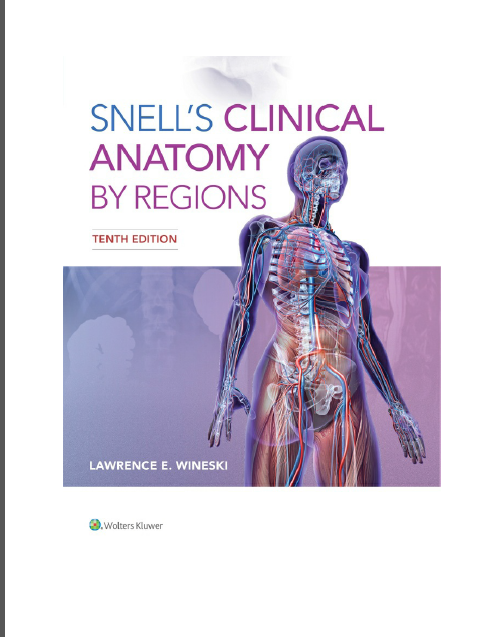In this post you can download pdf of Snell's Clinical Anatomy By Regions from here free.
Preface
I have the great honor of introducing the work of Dr. Richard S. Snell to continue in this new one edition of the text by him. I've always admired this book because I've used it before editions as a student and as an instructor, and I enjoyed the opportunity to do so make a small contribution to the ninth edition. I hope this 10th edition responds dr. Snell's high standards and will continue its science legacy as well clinical relevance in education.
This book provides health science students with an overview of basic anatomy in a strong clinical context. Includes the following changes:
1. The order of the seasons has been changed according to the medical standard School dissection sequence
2. The progress of the topics in each chapter is checked from the beginning Raw materials and building more complex relationships.
3. Each chapter begins and ends with a list of learning objectives Introduces educational goals with a set of key concepts The basic topics in this chapter are anatomy, of which learning is the most important And understand. The key terms summarize the most important points Anatomy examined in this chapter.
4. The text has been extensively revised to include new content and Updated Terms The new table summarizes this briefly: information
5. New and/or updated drawings better reflect structural points. Especially the surface anatomy.
Each chapter follows a similar format. This makes finding the material easier. You can easily move from one part of the book to another. Each chapter focuses on the following categories:
1. Clinical Example: A short case report demonstrating the importance of Anatomy in Medicine introduces the chapter.
2. Learning Objectives: As described above, this section focuses on primary anatomy student most important to learn and understand.
3. Basic Clinical Anatomy: provides much of the introductory chapter Information on Gross Anatomical Structures of Clinical Significance And embryological notes complement the original text and reflect the clinic Explain its uses and key adult and innate morphologies
Deviations
4. Radiographic Anatomy: Each chapter contains different standards Medical images (for example, X-rays, CT scans, MRI exams and Ultrasound) to show the natural anatomy in most cases Observed by doctors. Photos tagged anatomy in cross section Encourage students to think about three-dimensional anatomy, This is very important in the interpretation of imaging studies. 5. Surface structure: in this section, with surface reference points Palpation points for important underlying anatomical structures Thorough physical examination.
6. Key Concepts: The last part of this chapter summarizes the main parts. Anatomical points discussed in the chapters to deepen the subject Is covered.
7. Review Questions: A set of review questions is available online At www.thePoint.lww.com. The purpose of these questions is three: Draw attention to important areas, allow students to evaluate Their strengths and weaknesses and provide a kind of self-assessment For questions raised in the test conditions The questions revolve around the National Council and Axis A. A problem that needs a descriptive answer. Like previous versions, this book has many illustrations. Most have numbers It is kept simple to transfer the basic floor plans that underlie it Organize body areas with an illustration that summarizes the nerves Maintains blood supply to the area and Distribution of cranial nerves.
{getButton} $text={Snell's Clinical Anatomy By Regions(257.5mb)} $icon={download} $color={Hex Color}

